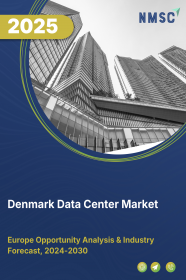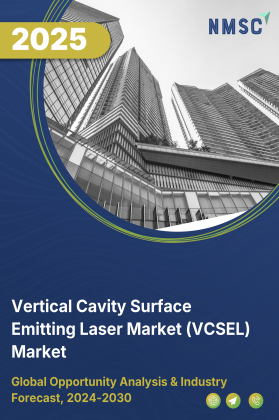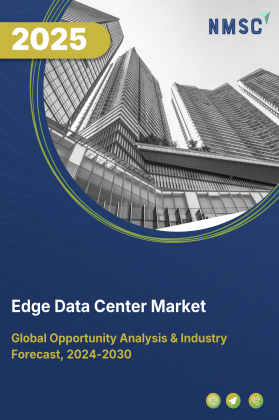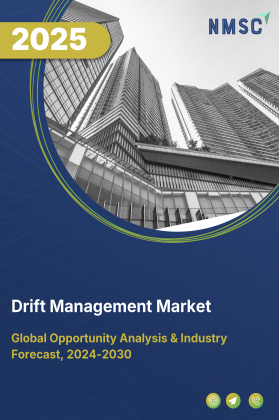
Denmark Data Center Market by Infrastructure (Hardware, Software, and Services), by Type (Enterprise Data Centers, and others), by Data Center Rating (Tier I, and others), by Size (Small Data Centers, and others), by Power Capacity (<0.01 GW, 0.01-0.05 GW, 0.05-0.1 GW, 0.1-0.5 GW, and >0.5 GW), by Server Rack Density (<10kW, and others), by Data Center Redundancy (N+1, and others), by PUE Outlook (Less than 1.2, and others), and Others - Opportunity Analysis and Industry Forecast, 2024–2030
Industry: ICT & Media | Publish Date: 03-Nov-2025 | No of Pages: 210 | No. of Tables: 166 | No. of Figures: 111 | Format: PDF | Report Code : IC2427
Denmark Data Center Market Overview
The Denmark Data Center Market size was valued at USD 3.26 billion in 2023, and is predicted to reach USD 10.31 billion by 2030, at a CAGR of 17.9% from 2024 to 2030. The data center market, also known as the network infrastructure market, encompasses the entire lifecycle of specialized infrastructure dedicated to hosting computing systems, including planning, construction, operation, and maintenance. It comprises a variety of components such as servers, storage systems, and networking gear, offering services such as cloud computing and connectivity solutions. Currently, the industry is experiencing widespread adoption of cloud services, alongside the emergence of edge computing to reduce latency.
Key trends include a focus on sustainability, heightened concerns about cybersecurity, the integration of hybrid and multi-cloud approaches, and the influence of 5G networks. These trends highlight the industry's response to the growing demand for scalable, efficient, and secure data processing and storage solutions in the era of digital transformation. According to the United States International Trade Commission, the data processing and storage market is projected to grow from USD 56 billion in 2020 to USD 90 billion by 2025.
Thriving Digital Environment Significantly Boosts the Market Growth
Denmark’s highly digitized economy and widespread technological adoption create a fertile ground for data center expansion. With strong digital government frameworks, extensive broadband coverage, and a tech-savvy population, the country offers a dynamic environment where demand for reliable and scalable data infrastructure continues to rise. As enterprises accelerate their digital transformation journeys, the need for local, high-performance computing resources intensifies, driving market growth.
The growing reliance on cloud platforms, smart services, and data-driven operations across sectors is elevating expectations for low-latency, secure, and energy-efficient hosting. Denmark’s emphasis on digital readiness supports the growth of a resilient data center ecosystem that can handle increasing workloads from AI, IoT, and advanced analytics. This momentum positions the country as a competitive digital hub within the country.
Collaborative Pursuit by Key Players Towards Sustainability is Driving the Growth of the Market
Sustainability is a cornerstone of Denmark’s data center market, with industry stakeholders actively aligning with national and EU climate objectives. Market participants are increasingly collaborating to enhance energy efficiency, integrate renewable power sources, and implement circular technologies that reduce environmental impact. These joint efforts contribute to the emergence of climate-resilient digital infrastructure, strengthening Denmark’s reputation as a leader in green data center development.
Public and private players are adopting a unified vision of sustainable innovation, driving investment in smart power management, liquid cooling systems, and carbon offset strategies. This coordinated approach supports long-term competitiveness and regulatory compliance, while also meeting growing consumer demand for environmentally responsible digital services. As a result, sustainability-driven collaboration has become a powerful force shaping the market’s direction.
High Initial Investment Hinders Denmark Data Center Market Growth
Despite a favorable policy and technological environment, high capital expenditure requirements pose a significant barrier to entry for new players. Developing state-of-the-art data centers requires extensive funding for land, construction, equipment, and grid connectivity. This creates challenges for smaller companies and regional operators, limiting market participation and slowing innovation at the grassroots level.
Additionally, ongoing operational costs—particularly those related to energy efficiency, regulatory compliance, and skilled workforce—compound the financial burden. The need to continuously upgrade infrastructure to meet sustainability benchmarks and security standards further increases cost pressure. These capital-intensive dynamics can restrain the overall pace of market expansion, especially in periods of economic uncertainty or fluctuating energy markets.
Integration of Edge Computing Presents Lucrative Opportunity for Market Expansion
Edge computing is emerging as a transformative force in Denmark’s data center landscape, enabling data processing closer to end-users and reducing dependency on centralized infrastructure. This localized approach enhances real-time capabilities and supports latency-sensitive applications such as smart mobility, connected health, and advanced manufacturing. The shift toward edge infrastructure aligns with the country’s digital decentralization strategies, offering scalability without compromising performance.
The rise of edge nodes within regional and urban areas is unlocking new revenue streams for infrastructure providers, especially as demand surges for services that require continuous uptime and rapid response. Edge computing also supports greater energy optimization and regulatory compliance by enabling localized data handling, minimizing transmission loads, and improving service resilience. This growing segment presents a compelling growth path for the Denmark data center market over the coming years.
Competitive Landscape
The key market players operating in the Denmark data center industry include STACK Infrastructure Denmark ApS, Digital Realty Trust, Inc., atNorth ApS, Prime Data Centers Denmark ApS, GlobalConnect AB, Bulk Infrastructure AS, Penta Infra ApS, AtlasEdge Data Centres ApS, Cibicom A/S, Kolo DC (Serverius & Fuzion Network), NNIT A/S, JN Data A/S, Google, Microsoft, Colt Data Centre Services Ltd.
Denmark Data Center Market Key Segments
By Infrastructure
-
Hardware
-
IT Hardware
-
Servers
-
Storage Systems
-
Networking Equipment
-
-
Power Infrastructure Hardware
-
Uninterruptible Power Supplies (UPS)
-
Generators
-
Automatic Transfer Switches
-
Power Distribution Units (PDUs)
-
-
Mechanical Infrastructure Hardware
-
Computer-Room Air Conditioners (CRAC/CRA Units)
-
Chillers
-
Racks
-
Cable Management Systems
-
-
Safety & Security Hardware
-
Fire Suppression Systems
-
Physical Security Systems (CCTV, access controls)
-
-
-
Software
-
DCIM & Monitoring
-
Automation & Orchestration
-
Backup & Disaster Recovery
-
Security Software
-
Virtualization Software
-
Analytics & Reporting Software
-
Other Software
-
-
Services
-
Planning & Professional Services
-
Site & Building Design
-
System/Infrastructure Engineering
-
Professional Advisory (compliance, energy audits)
-
-
Integration & Deployment Services
-
Electrical & Mechanical Installation
-
Commissioning & Acceptance Testing
-
-
Operation & Support Services
-
Preventive & Corrective Maintenance
-
Facilities Management / Remote Monitoring
-
Support Services (helpdesk, onsite SLA support)
-
-
Hosting & Managed Services
-
Colocation & Cloud Hosting Services
-
Virtual/Private Hosting Platforms
-
-
By Type
-
Enterprise Data Centers
-
Colocation Data Centers
-
Cloud Data Centers
-
Hyperscale Data Centers
-
Edge Data Centers
-
Micro Data Centers
-
Others
By Data Center Rating
-
Tier I
-
Tier II
-
Tier III
-
Tier IV
By Size
-
Small Data Centers
-
Med-sized Data Centers
-
Large Data Centers
By Power Capacity
-
<0.01 GW (Small)
-
0.01-0.05 GW (Medium)
-
0.05-0.1 GW (Large)
-
0.1-0.5 GW (Hyperscale)
-
>0.5 GW (Mega-campus)
By Server Rack Density
-
<10kW
-
10-19kW
-
20-29kW
-
30-39kW
-
40-49kW
-
>50kW
By Data Center Redundancy
-
N (No Redundancy)
-
N+1 (Single-fault tolerant)
-
N+2 (Dual-fault tolerant)
-
2N (Full duplication)
-
2N+1 (Concurrently maintainable + extra spare)
-
3N/2N+2 (Multi-backup fault tolerant)
By PUE Outlook
-
Less than 1.2
-
1.2 - 1.5
-
1.5 - 2.0
-
Greater than 2.0
By Design Outlook
-
Traditional
-
Containerized
-
Modular
By End User
-
Cloud Service Provider
-
Technology Provider
-
Telecom
-
Healthcare
-
BFSI
-
Retail & E-commerce
-
Entertainment & Media
-
Government
-
Energy
-
Others
Key Players
-
STACK Infrastructure Denmark ApS
-
Digital Realty Trust, Inc.
-
atNorth ApS
-
Prime Data Centers Denmark ApS
-
GlobalConnect AB
-
Bulk Infrastructure AS
-
Penta Infra ApS
-
AtlasEdge Data Centres ApS
-
Cibicom A/S
-
Kolo DC (Serverius & Fuzion Network)
-
NNIT A/S
-
JN Data A/S
-
Google
-
Microsoft
-
Colt Data Centre Services Ltd.
REPORT SCOPE AND SEGMENTATION:
|
Parameters |
Details |
|
Market Size in 2023 |
USD 3.26 Billion |
|
Revenue Forecast in 2030 |
USD 10.31 Billion |
|
Growth Rate |
CAGR of 17.9% from 2024 to 2030 |
|
Analysis Period |
2023–2030 |
|
Base Year Considered |
2023 |
|
Forecast Period |
2024–2030 |
|
Market Size Estimation |
Billion (USD) |
|
Growth Factors |
|
|
Companies Profiled |
15 |
|
Market Share |
Available for 10 companies |
|
Customization Scope |
Free customization (equivalent up to 80 working hours of analysts) after purchase. Addition or alteration to country, regional, and segment scope. |
|
Pricing and Purchase Options |
Avail customized purchase options to meet your exact research needs. |

















 Speak to Our Analyst
Speak to Our Analyst

























